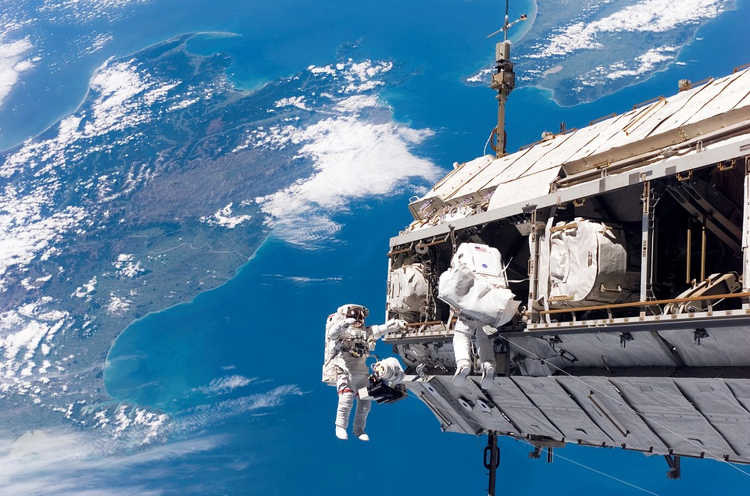We all have experienced motion sickness in one way or the other, whether it was during a long drive at the tortuous roads in the mountains or during a roller-coaster ride. I know people who even get motion sickness in escalators. It is, hence, not far-fetched to imagine that weightlessness in space can cause motion sickness to astronauts as well. According to Heer and Paloski, around 60-80% of astronauts experience space sickness, more formally called Space Adaptation Syndrome, within the first few days after departure. The symptoms, much like motion sickness on the Earth, include nausea, headaches, vertigo, and vomiting in severe cases. Although the sickness persists in most cases in first three days, it can occur at any time during their stay in the space.
Credits: Wikipedia
The intense training astronauts go through, along with the careful analysis may still not be enough to predict when the condition can hit them. It varies from person to person, however, there is no way to predict that. Some can experience motion sickness while orbiting the Earth, while others may not experience any motion sickness at all. Space motion sickness is the result of changes in g-forces. Gravity helps us to determine our spatial orientation, without which our multiple physiological processes in space will need to adapt to weightlessness by our Vestibular system. The cause of this space motion sickness is the misalignment between what your eyes can see and what your body can feel. The balancing equipment provided by our nature lies within our inner ear. The mismatch is far worse on our Proprioceptive Sensory system in space. While floating, astronauts may feel like their limbs are at one place when, in fact, they were at another, according to NASA.
The space motion sickness becomes a hurdle for astronauts to perform their job in space. National Space Biomedical Research Institute, established in 1997, is working to help with causes and effects of the space motion sickness and their prevention. It is suggested that inner ear and Vestibular System can be manipulated before the launch of mission to minimize the motion sickness. Similarly, another solution can be specially designed goggles which can be worn while going through an obstacle course. It will help brain’s perception to develop and train for the future space environments.
Want to know more about the space motion sickness? Watch the video below!
Credits: How stuff works.

